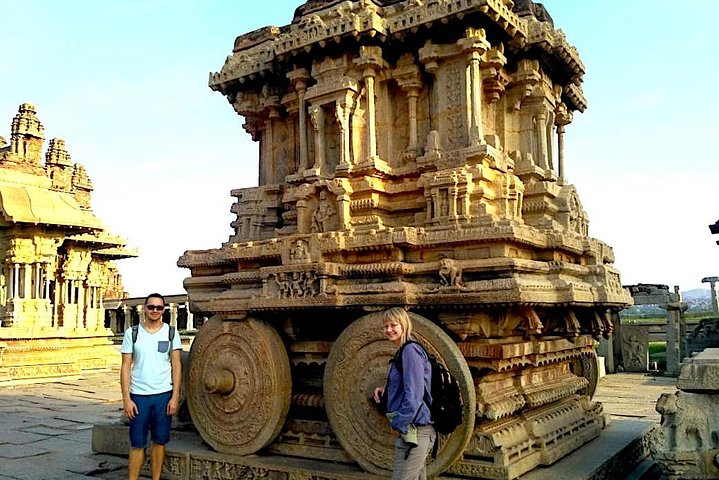Exploring the Timeless Ruins of Hampi: A Cultural Odyssey
Embark on a journey through time as I explore the enchanting ruins of Hampi, the ancient capital of the Vijayanagara Empire. Discover the cultural and spiritual connections that transcend borders and generations.
A Journey Back in Time: The Enchanting Ruins of Hampi
As I embarked on my journey to Hampi, the ancient capital of the Vijayanagara Empire, I was filled with anticipation. The allure of exploring a world heritage site, rich with history and culture, was irresistible. My journey began with a 350-kilometer drive from Bangalore, a city that had already captivated me with its vibrant energy and cultural diversity. The road to Hampi was a passage through time, leading me to a place where the past and present coexist in harmony.
Upon arrival, I was greeted by the towering figure of Ugra Narasimha, a 22-foot idol carved during the reign of Krishnadevaraya. The intricate details of the sculpture, with a serpent’s hood gracefully arching over its head, were a testament to the artistic prowess of the era. As I stood in awe, I couldn’t help but reflect on the cultural significance of such monuments, much like the temples and palaces I had explored in Japan.
The day continued with a visit to the Badavi Linga, the largest of all lingas in Hampi. Its black stone surface, perpetually bathed in water from a nearby canal, exuded a serene and mystical aura. The Balakrishna Temple, built to commemorate a king’s conquest, was next on our itinerary. The temple’s carvings of mythical beasts and deities transported me to a world of legends and lore, reminiscent of the stories my mother used to tell me about the ancient gods of Japan.
The Majesty of Virupaksha and Hemakunta Hill
As the sun began to set, we made our way to Hemakunta Hill, a site dotted with ancient temples offering panoramic views of the town below. The golden hues of the setting sun cast a magical glow over the landscape, creating a moment of tranquility and reflection. It was a perfect opportunity to practice mindfulness, a practice deeply rooted in my cultural upbringing.
Our day concluded at the Virupaksha Temple, a magnificent structure from the Hoysala period. The temple’s eleven-storey tower, standing at 165 feet, was an architectural marvel. As I wandered through its halls, I was reminded of the temples I had visited in Kyoto, each stone and carving telling a story of devotion and artistry.
The river Tungabhadra, flowing gently through the temple grounds, added to the serene ambiance. It was a place where time seemed to stand still, allowing me to immerse myself fully in the experience. The spiritual energy of the temple was palpable, a reminder of the deep connection between culture and spirituality that I have always cherished.
Discovering the Grandeur of Vijaya Vittala and the Royal Enclosures
The following day, we ventured to the Vijaya Vittala Temple, perhaps the grandest masterpiece of Hampi. Its polyhedron foundation and the iconic stone chariot, adorned with figures of soldiers and foreign visitors, were a sight to behold. The musical pillars of the temple, a marvel of engineering and art, resonated with a melody that seemed to echo through the ages.
Our exploration continued at the Royal Enclosures, where the King’s Balance stood as a symbol of generosity and justice. The Elephant Stables, Queen’s Bath, and Lotus Mahal were architectural wonders that spoke of a bygone era of opulence and grandeur. The Zanana enclosure, a space reserved for royal women, offered a glimpse into the lives of those who once inhabited these majestic structures.
As I wandered through these ancient sites, I was struck by the parallels between the Vijayanagara Empire and the cultural heritage of Japan. Both civilizations, though separated by geography and time, shared a profound appreciation for art, architecture, and spirituality.
My journey to Hampi was more than just a tour of ruins; it was a journey of cultural discovery and reflection. It reminded me of the importance of preserving our heritage and the stories that connect us across continents and generations. As I left Hampi, I carried with me a deeper understanding of the rich tapestry of history that binds us all.

















































